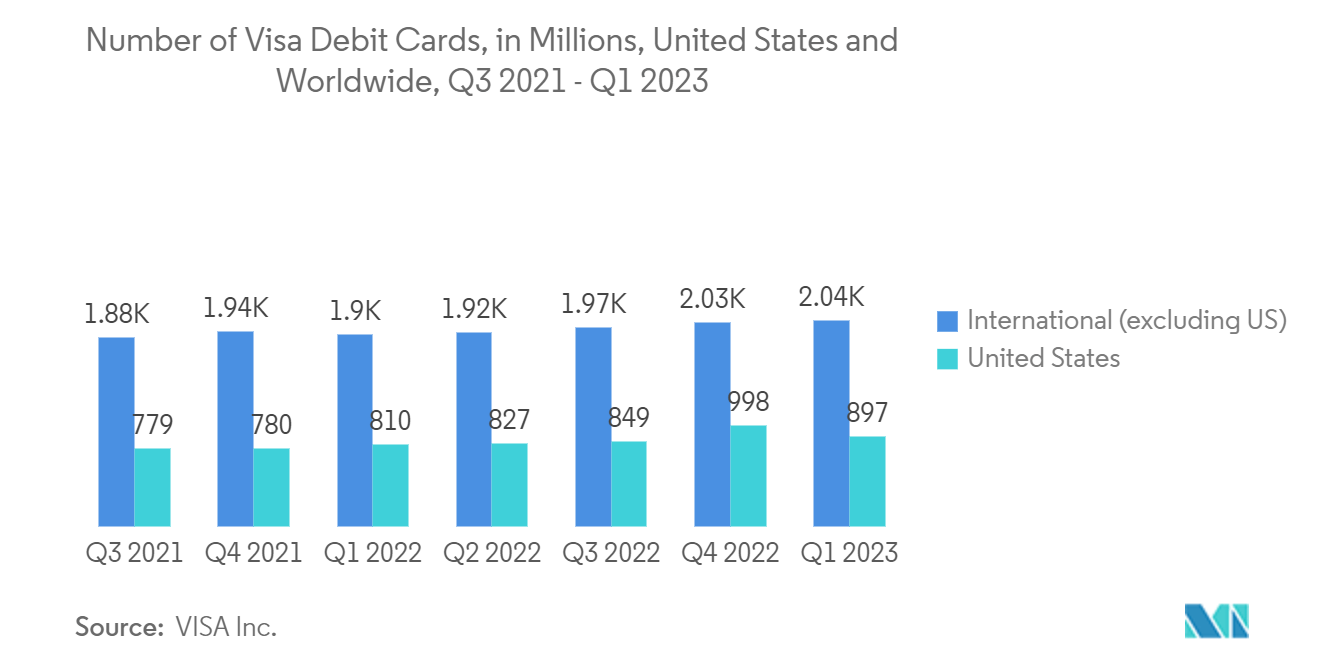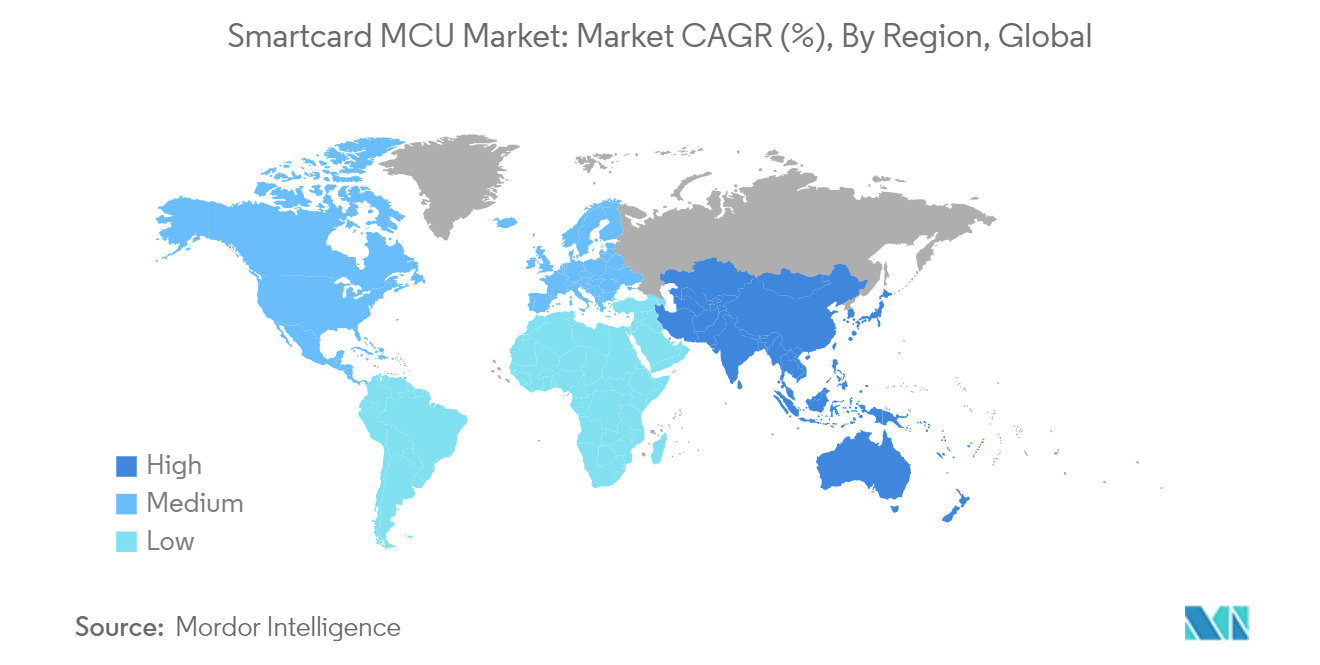Market Trends of Smartcard MCU Industry
BFSI to Witness the Growth
- Smart cards for banking and finance now incorporate specialized integrated circuit cards, ensuring robust security measures. These cards house embedded memory chips and microprocessors, enabling secure data storage and processing. They serve diverse functions in financial activities, including transaction authentication, secure access to online banking services, debit and credit card payments, and contactless payment methods.
- The digitization of payment processes owes much to the Internet's development and the emergence of e-commerce. This transition has led to a plethora of electronic payment options, ranging from payment cards (credit and debit) to digital wallets, electronic cash, and contactless payment methods. The surging popularity of mobile payment services is currently undergoing a transitional phase, poised for future technological advancements. These advancements in payment methods are expected to leverage smart card technology, driving market growth.
- Smart cards featuring MCUs (microcontroller units) are commonly used alongside personal identification numbers (PINs). They serve multiple purposes, enhancing organizational security, acting as multifactor authentication (MFA) tokens, and verifying single sign-on (SSO) users, ultimately facilitating passwordless authentication. The rapid increase in online transactions, partly due to the pandemic and the rise of alternative payment methods like Apple Pay, Klarna, Stripe, and Amazon Pay, has surpassed face-to-face transactions. These advancements significantly expand the potential applications of smart card technology in the industry.
- EMV card technology, employing compact yet robust chips integrated into credit and debit cards, is increasingly recognized as an evolving payment solution. EMV, an acronym for Europay, Mastercard, and Visa, denotes the collaborative efforts behind this industry standard. These advanced cards are indispensable in fortifying businesses and customer security by mitigating credit card fraud losses, fostering a more secure payment environment, and ensuring a safer transactional experience.
- Most new EMV cards and chip-based readers come equipped with near-field communication (NFC) technology, enabling contactless payments. Customers can wave their cards across the reader, facilitating quicker and more secure transactions. Besides heightened security, EMV smart cards offer enhanced speed and convenience by securely communicating between the card and the terminal, benefitting both merchants and cardholders.
- EMV cards, featuring chips employing cryptographic algorithms, heighten transaction security by uniquely encrypting data with each use. During card-present transactions, these cards employ a dual verification process, requiring the physical card and the customer's PIN. This authentication method validates the cardholder, enabling the confirmation and approval of the one-time password (OTP) generated by the chip. Anticipated technological advancements are poised to stimulate extensive demand for smart card technology, propelling market growth in the foreseeable future.

Asia-Pacific Expected to Hold Significant Market Share
- The adoption of smart card technology in the APAC is experiencing a change towards multi-application smart cards. These cards are being used for multiple purposes, such as payment, identification, and access control, resulting in greater convenience and efficiency for consumers and cost savings for businesses. Moreover, the need for enhanced security features in smart cards has been growing, particularly with the increase in online transactions.
- Smart card technology has gained widespread popularity in India, owing to the government's focus on digitalization. Almost every Indian citizen probably possesses some form of a smart card. These cards are extensively utilized in various sectors, such as banking, healthcare, transportation, and government identification. For example, smart cards are employed for Driving License/Vehicle Registration Certificate (DL/RC), Multi-purpose National Identity Card (MNIC), Rashtriya Swasthya Bima Yojana (RSBY), and Electronic Passport (e-Passport) in India. The increasing adoption of smart card technology in the region is expected to drive the market.
- The near future is expected to witness a surge in the demand for digital payments and smart cards. The Indian BFSI sector is progressively embracing smart card technology, which is anticipated to provide substantial prospects for MCU makers. Notably, insurance companies operating under the Rashtriya Swasthya Bima Yojana (RSBY) and business correspondents for banks are producing millions of chip cards, making India one of the swiftest adopters of smart card technology. Such factors are expected to drive the demand for the market.
- In addition, implementing smart card technology in India has benefited social welfare programs and transportation systems, as it has improved the quality of life for the general public. An example is the Shakti smart card scheme, which enables women residing in Karnataka to travel freely on non-premium buses. According to EMVCo, the Smart Card India initiative has reduced transaction time, minimized losses, and increased satisfaction among beneficiaries. The utilization of innovative technologies like smart cards has the potential to enhance future welfare programs.
- Smart cards equipped with MCUs that possess the ability to establish short-range wireless connections have the potential to be utilized in contactless payment systems. As the usage of contactless cards continues to rise and their adoption rates increase within the region, the volume of payments conducted through this method has experienced a substantial surge, consequently generating a notable market demand.


